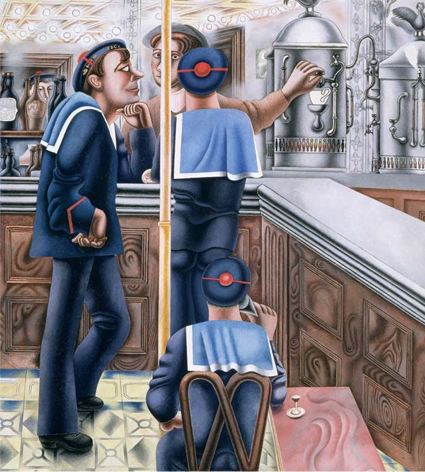Edward Burra, at Pallant House.
In January 1934, a young English painter called Edward Burra sailed for New York. As so often in his life, he was looking for an escape. Trapped inside a prematurely aged body, crippled by a combination of congenitally inherited rheumatoid arthritis and pernicious anaemia, Burra lived through his senses. Travel was his way of spicing a painful life with new, vivid, unfamiliar experiences. America’s most vibrant city thrilled him. On arrival, he wrote breathlessly to his close friend Barabara Ker-Seymer that "New York would drive you into a fit ... there are about 10 Woolworths of all sorts also 40 cinemas & Apollo burlesk featuring Paris in Harlem which I am plotting to go to... The food is delish 40000000 tons of hot dogs and hamburgers must be consumed in N.Y. daily." (sic)
Burra painted, just as he wrote, in exuberant defiance of his own frailty. Too weak to push oil paint into the weft of a canvas, he had to work in watercolour or gouache, holding his brush in the eccentric, clawlike grip of his swollen right fist. Working from memory, on large sheets of paper, in an edgily abbreviated figurative style, he set down vivid impressions of Harlem life: cool dudes in zoot suits posing on the sidewalk; the maracca-brandishing chorus line of a black burlesque show; hectically cavorting dancers studied, with a touch of envy, from his table in the corner of Harlem’s leading jazz club, the Savoy Ballroom. There are few signs of the Great Depression in Burra’s New York pictures. During the earlier part of his career, he accentuated the positive.
"Edward Burra", at Pallant House Gallery in Chichester, is the first museum retrospective of the artist’s work for a quarter of a century. It distils him to some 70...


